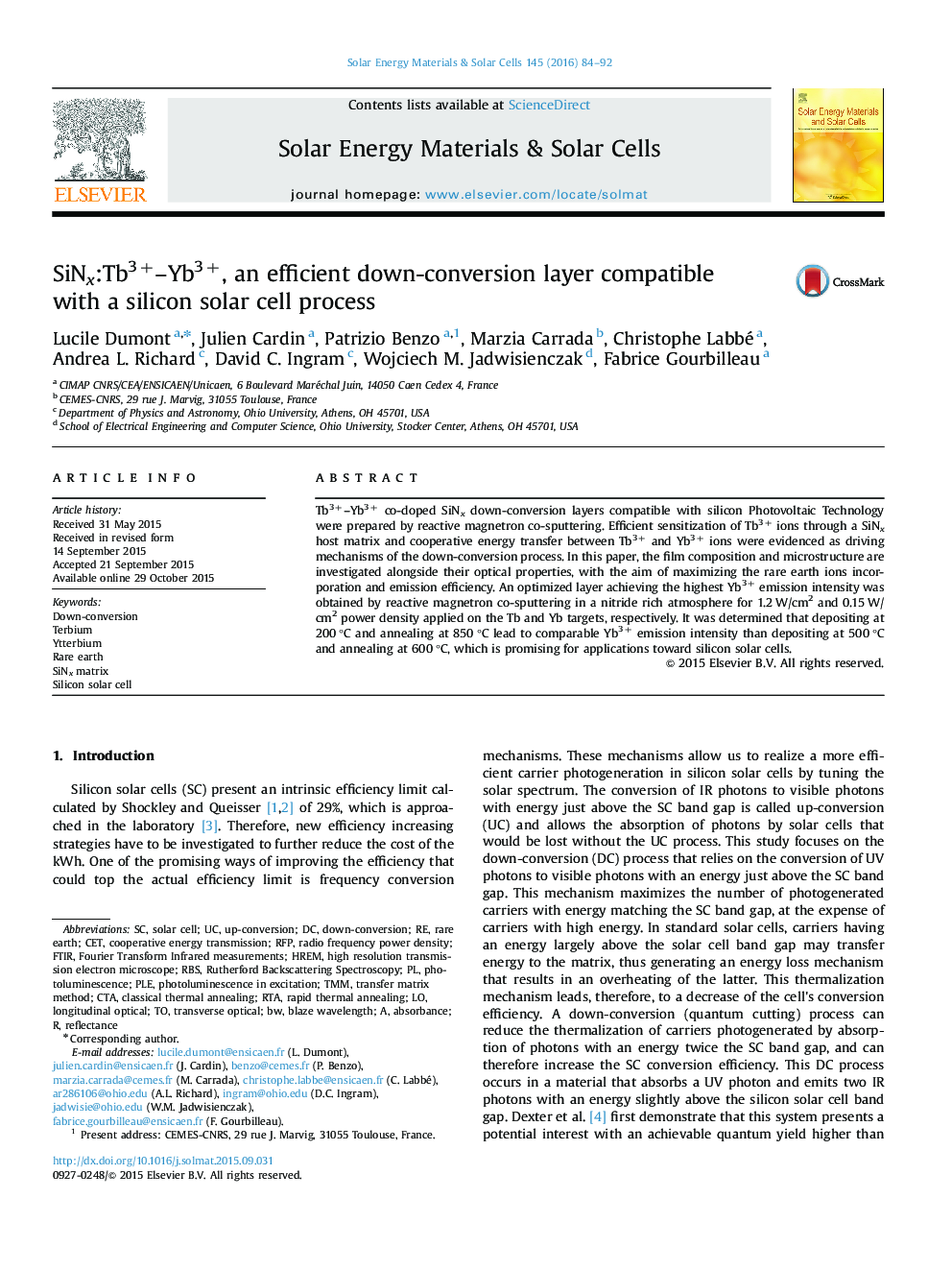| Article ID | Journal | Published Year | Pages | File Type |
|---|---|---|---|---|
| 77658 | Solar Energy Materials and Solar Cells | 2016 | 9 Pages |
•SiNx layers presents a higher emission than the SiOxNy:Tb3+–Yb3+ ones.•The SiNx matrix incorporate more rare earths than SiOxNy matrix without clustering.•Comparable optical properties with Si3N4 anti-reflective coating of SC.•SiNx layers presents a higher internal efficiency than the SiOxNy:Tb3+–Yb3+ ones.•Increase of global efficiency with light extraction in silicon (SC).
Tb3+–Yb3+ co-doped SiNx down-conversion layers compatible with silicon Photovoltaic Technology were prepared by reactive magnetron co-sputtering. Efficient sensitization of Tb3+ ions through a SiNx host matrix and cooperative energy transfer between Tb3+ and Yb3+ ions were evidenced as driving mechanisms of the down-conversion process. In this paper, the film composition and microstructure are investigated alongside their optical properties, with the aim of maximizing the rare earth ions incorporation and emission efficiency. An optimized layer achieving the highest Yb3+ emission intensity was obtained by reactive magnetron co-sputtering in a nitride rich atmosphere for 1.2 W/cm2 and 0.15 W/cm2 power density applied on the Tb and Yb targets, respectively. It was determined that depositing at 200 °C and annealing at 850 °C lead to comparable Yb3+ emission intensity than depositing at 500 °C and annealing at 600 °C, which is promising for applications toward silicon solar cells.
